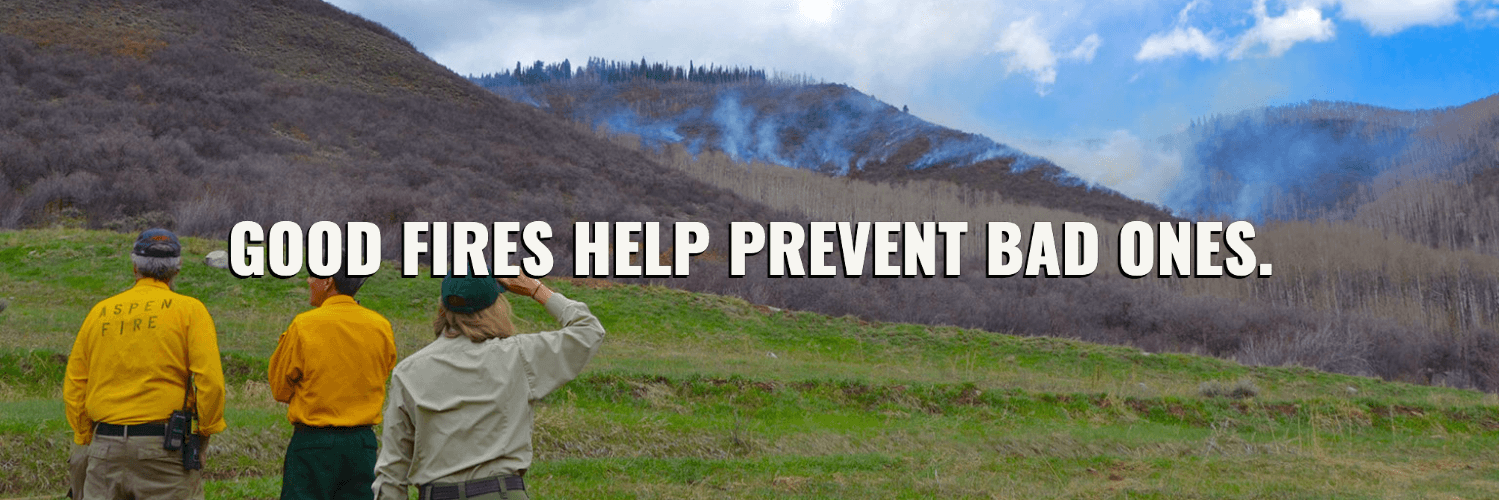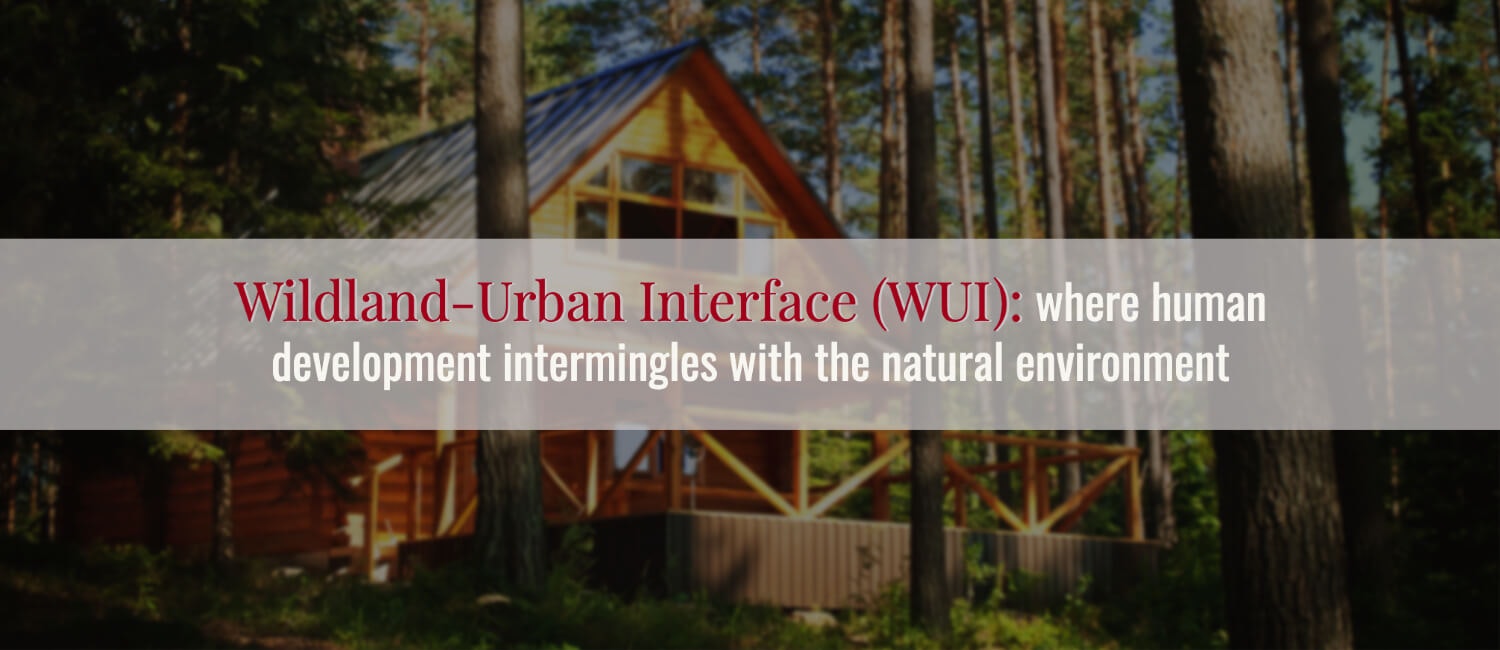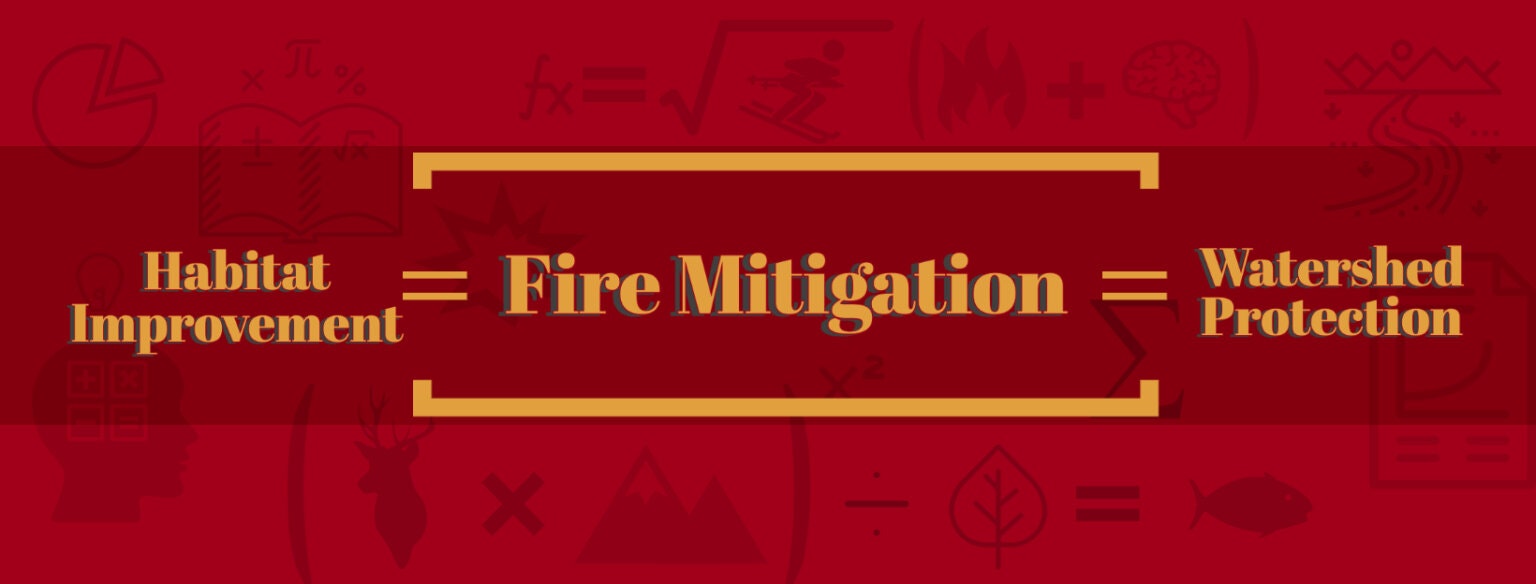Prescribed Fires
Click Here for info on the Sunnyside Prescribed Fire.
Click Here for a video of our recorded community meeting regarding the Sunnyside Prescribed Fire.
Click Here for a video on "Untrammeling the Wilderness: Restoring Natural Conditions Through the Return of Human-ignited Fire" courtesy of Aspen Center for Environmental Studies and Wilderness Workshop

Catastrophic wildfires are the new normal in Colorado. These fires spread quickly over areas of wildland, woodland, and brush, threatening communities and destroying property. However, it is important to realize some fires are good.
To help prevent future wildfires, forest and fire experts are using prescribed fires. Prescribed fires -- also known as prescribed burns or controlled burns -- are carefully planned and executed by authorized land or forest management entities during appropriate weather conditions as a tool to prevent wildfire.
Prescribed fires help:
- Reduce excessive amounts of grasses, trees, and brush, which is fuel for wildfire
- Encourage growth of native Coloradan vegetation, which restores ecosystem health
- Slow wildfires and provide firefighters with a safer area to fight wildfire.

Here in the Roaring Fork Valley, we have a lot of fuel for wildfires in our forests and a lot of homes in and near these forests.
That’s why Aspen Fire is teaming up with the Upper Colorado River Interagency Fire Management Unit (UCR), Pitkin County, and the City of Aspen, as well as Aspen Center for Environmental Studies and Wilderness Workshop. Together, our team of forestry and fire experts can use “prescribed fire” as a cost-effective wildfire mitigation tool to protect communities, improve wildlife habitat, and protect our watershed.
The Forest Service conducts prescribed fires in the spring and fall, when conditions are less extreme and the fires burn less intensely than occurs with a large wildfire in the middle of summer. “Prescribed fires are an important tool available to land managers to create fuel breaks so fire suppression efforts can be more effective, reducing risk to firefighters and nearby communities,” said Larry Sandoval, BLM Colorado River Valley Field Manager.
These forests in the Roaring Fork Valley and much of the western US are fire-adapted, which means they benefit from natural wildfires. By clearing out the old, less productive vegetation with a lower intensity prescribed fire, we see almost immediately new, very nutritious growth come back that wildlife like deer and elk really love.
Right now, the Forest Service is doing a few thousand acres of prescribed fires in a good year in the Roaring Fork Valley, which is great. But the Aspen-Sopris Ranger District is more than 700,000 acres, so we really need to be doing this on a larger scale. To do that we need the public’s support and patience, and a coordinated approach across jurisdictions.
Did you know prescribed fires have been around for many years?
Fire is a natural part of the Colorado landscape and is necessary to keep our forests healthy and resilient. Native Americans used prescribed fire as a tool to ensure healthy ecosystems and promote growth of desirable plants that benefit humans and large grazing animals.
Prescribed fires help protect our communities and property — and keep our forests healthy and resilient for future generations to enjoy.
Language adapted from Calfire’s ReadyforWildfire Toolkit and the US Forest Service - White River National Forest.

ASPEN FIRE IS PRIORITIZING WILDFIRE MITIGATION.
Prescribed fire is just one tool in the toolbelt.
In addition to "landscape scale" prescribed fire, we must also prepare for wildfires as individual homeowners, neighborhoods, and as a community. Click the buttons below to learn how you can contribute to community wildfire preparedness across our district and its surrounding landscapes.
